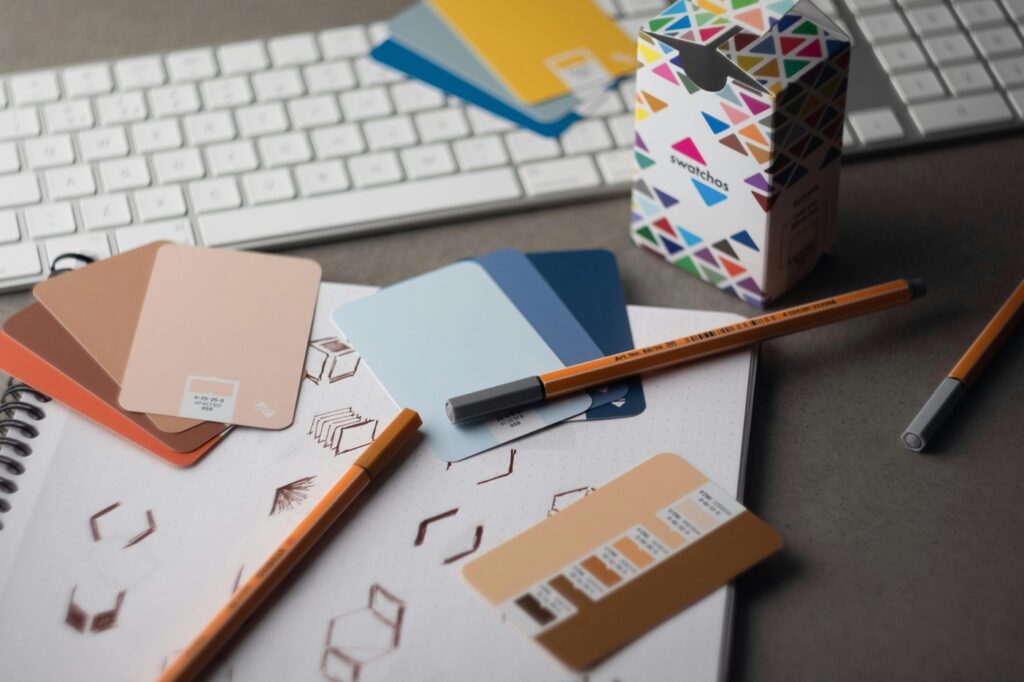In the world of brand design, two forces pull in opposite directions: consistency and creativity. On one hand, consistency ensures your brand is instantly recognisable and reliable. On the other hand, creativity allows your brand to stay fresh, engaging, and relevant. Knowing how to balance consistency & creativity in Brand Design is a strategic necessity.
Why Consistency Matters
Consistency is the backbone of strong branding. When your visual identity, tone of voice, and messaging remain uniform across platforms, it builds trust and recognition. Think about how quickly you identify Coca-Cola’s red, Apple’s minimalist style, or Nike’s swoosh. These brands have maintained clear and consistent visual cues over decades.
Consistency in design creates:
- Recognition: Customers know it’s you at a glance.
- Professionalism: A coherent look and feel signals reliability.
- Trust: Familiarity breeds confidence in your products or services.
Without consistency, a brand risks looking fragmented, unprofessional, or forgettable.
Why Creativity Matters
However, too much consistency without creativity can make a brand stale. In today’s fast-moving digital landscape, audiences crave novelty, and brands must evolve to remain relevant. Creativity allows you to adapt campaigns to cultural moments, new platforms, or shifting consumer interests without losing your essence.
Creativity in design brings:
- Engagement: Unique visuals capture attention in crowded spaces.
- Adaptability: Fresh approaches keep your brand aligned with current trends.
- Emotional Connection: Creative storytelling makes people feel something beyond recognition.
Without creativity, a brand risks becoming predictable and boring.
The Balance: Frameworks for Designers
Striking the right balance means anchoring in consistency while leaving space for creative expression. Here are some practical ways to achieve it:
- Build a Flexible Design System:
Establish brand guidelines (logos, typography, colours) but allow room for experimentation within campaigns. Think of it as a “playground” with boundaries. - Differentiate Between Core and Campaign Assets:
Your logo, brand colours, and typography should stay consistent, while campaign visuals, illustrations, or motion graphics can be more experimental. - Use Brand Archetypes as a Guide:
Know your brand personality. Whether it’s adventurous, caring, or rebellious. This gives creative work direction without breaking consistency. - Test and Adapt:
Track audience response. If a creative direction resonates, integrate it into the brand system. If not, adjust without abandoning the core identity.
Real-World Examples
- Spotify: While their logo and green palette stay consistent, their playlists, illustrations, and campaign graphics are bold, playful, and ever-changing.
- Airbnb: Maintains a recognisable logo and typography but adapts creative elements across cultures and regions.
- MTN (in Africa): Keeps its iconic yellow branding consistent but infuses creativity in campaigns tailored to local markets.
The strongest brands don’t choose between consistency or creativity; they master the art of blending both. Consistency provides stability, while creativity fuels growth and connection. For designers and brand strategists, the goal isn’t to play it safe or break all the rules, but to create a living brand identity that feels both familiar and surprising.
In the end, a brand that balances consistency and creativity isn’t just seen, it’s remembered.







